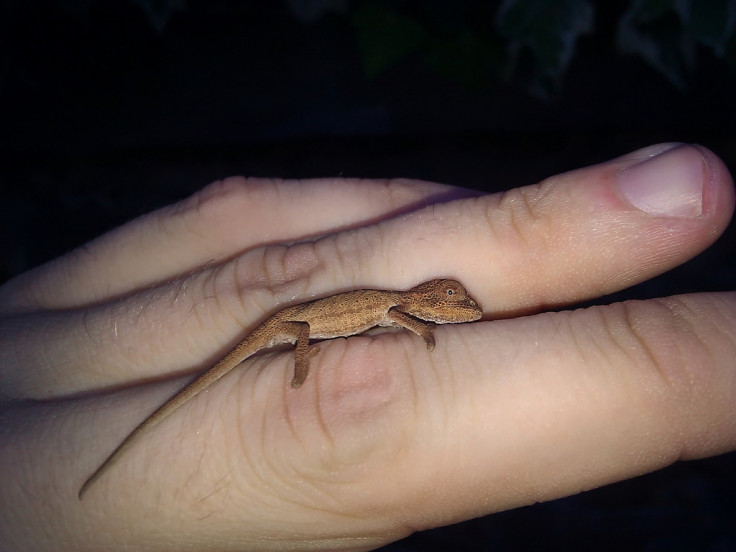Teeny, tiny chameleon tongues are 2,000 times quicker than fastest car in the world

Smaller chameleons have more powerful tongues to catch their prey than larger chameleons, a new study has suggested. Researchers found that despite the smaller size of such creatures, their tongues were faster, longer and more powerful than those of larger individuals.
The research, from Brown University in Rhode Island in the US, set out to analyse the way in which chameleons use their tongues to catch crickets, which are a staple part of their diet. It was discovered that a tiny chameleon – less than just seven centimetres in length – could accelerate their tongues at a rate of, in relative automotive terms, 0 to 60 miles per hour in a hundredth of a second. This is more than 2,000 times quicker than the same acceleration of the world's fastest car.
"Smaller species have higher performance than larger species," said Christopher Anderson, lead author of the study. "What this study shows is that by using smaller species, we may be able to elucidate these higher performance values."
The results showed that in some cases, larger chameleons had a peak acceleration of almost 20% slower than the smaller species. Anderson believes that theoretically this does make sense, as proportionally, the structure responsible for lashing out the chameleon's tongue is the same for all individuals. However, proportionally to its body size, the mechanism is much larger in the smaller chameleons.
The study, published in Scientific Reports, used 20 species of chameleon, all with various sizes of individuals. All subjects were recorded whipping their tongues out to catch crickets using a high-tech camera that's 50 times more powerful than an iPhone video recorder.
The resulting recordings showed that the highest-peak acceleration, the overall power and the distance that the tongue could extend in relation to its body size were all greater in smaller chameleons. It is believed these results may help researchers when studying the physical performance of these animals. It is now acceptable to study the smaller species, and not just the big ones.
© Copyright IBTimes 2025. All rights reserved.






















